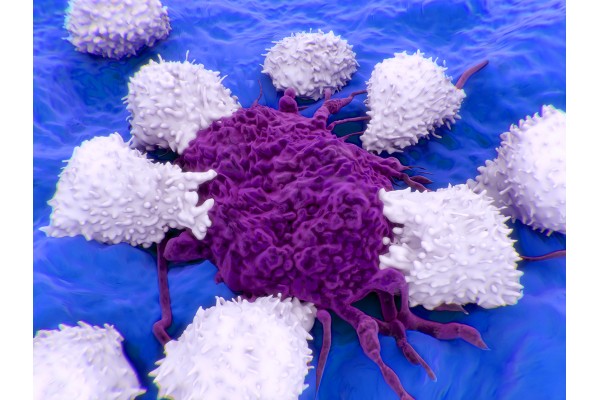New cell death mechanism revealed
November 24, 2017
Source: drugdu
 1,109
1,109

A healthy brain has a self-cleaning mechanism called "autophagy," which in Greek etymology literally means "eating oneself."
In autophagy, brain cell parts that are no longer useful are broken down into even smaller parts, recycled, and are then used to create new cells. However, in neurodegenerative conditions such as dementia, Parkinson's, Huntington's disease, and many other incurable disorders, the autophagy process is faulty.
While this is something that researchers already knew, what they didn't know until now were the precise mechanisms by which this happens, and more specifically, how this leads to cell death — particularly in the late stages of the disease.
New research uncovers precisely these mechanisms. The groundbreaking study was carried out by scientists at King's College London in the United Kingdom, and the findings were published in the journal Current Biology.
While the study used a model of a single, rare neurodegenerative disorder known as dentatorubral-pallidoluysian atrophy (DRPLA), the findings are likely applicable to all neurological conditions that are characterized by faulty autophagy.
Dr. Olga Baron, of the Institute of Psychiatry, Psychology & Neuroscience (IoPPN) at King's College London, is the first author of the study, and Dr. Manolis Fanto, also from the IoPPN, is the senior and corresponding author.
Autophagy block mechanism revealed
Dr. Fanto and his team designed two DRPLA disease models using two different kinds of mice and replicated the findings in human cells.
The experiments revealed that a "progressive stall" and then a "chronic block" occur in autophagy, in certain disease-specific areas of the brain. In this "persistent stall," the brain cells get "confused" and try to maintain a normal homeostasis through alternative molecular pathways, or routes.
But by doing so, the team reveals, the cells degrade themselves. In normal autophagy, cellular waste would be pushed out, keeping the brain "clean" — but because of the autophagy block, the cells start "throwing out" parts of themselves, leading to degradation.
Specifically, the study authors revealed the mechanisms by which the cells start degrading parts of their nucleus and cytoplasmic layer.
"[In this study,]" they write, "we report the first in vivo evidence of a nucleophagy-based mechanism in neurodegeneration, reflected in the association of nuclear Lamin B1 with GFP-LC3 in the nucleus and in the cytoplasm."
Current therapies may be misguided
"We hypothesize," they note, "that this excretion process is a[n alternative] clearance mechanism for the cell. However, with the potential consequence of causing cell and tissue atrophy."
Given that many therapies for neurodegenerative disorders attempt to boost cell clearance, the new findings suggest that such an approach might make matters worse rather than better.
In the absence of normal autophagy, this alternative cell clearance process "depletes the cell of material, damaging its nucleus and cytoplasm and leaving behind cell corpses with a fragile nucleus and thin cytoplasmic layer."
"The common factor underlying this mechanism of cell atrophy and death is a persistent block in autophagy," the authors conclude. "Since chronic autophagy inhibition has been reported in an increasing number of rare and common human neurodegenerative pathologies, the mechanism here reported may, therefore, be of great relevance in human disease."
The findings may be relevant in other neurodegenerative diseases where faulty autophagy is key.
"Autophagy is important for all degenerative neurological conditions and what is emerging from our study is how the blockage of autophagy kills nerve cells in a new way, not described before."
Dr. Manolis Fanto
Dr. Baron also comments on the findings, saying, "Studies like ours, looking at rare genetic conditions, can be very powerful in finding new mechanisms."
"We are currently looking into whether we can replicate the same findings for other disorders where autophagy has been shown to malfunction, like Alzheimer's disease and motor neuron disease," she adds.
If the findings are replicated, they could eventually lead to better, more precise therapies for improving symptoms of neurodegeneration.
By editorRead more on
- A Scientifically-Supported App for Early Stage Dementia by SMART Brain Ageing July 10, 2018
- Brain U Online Delays Dementia June 28, 2018
- Dementia Discovery Fund, Surpassed Funding Target June 27, 2018
- Prothena Announces Global Neuroscience Research & Development Collaboration with Celgene for Novel Therapies for Patients with Neurodegenerative Diseases March 22, 2018
- Researchers in aging tie genes to brain degeneration March 16, 2018
your submission has already been received.
OK
Subscribe
Please enter a valid Email address!
Submit
The most relevant industry news & insight will be sent to you every two weeks.



